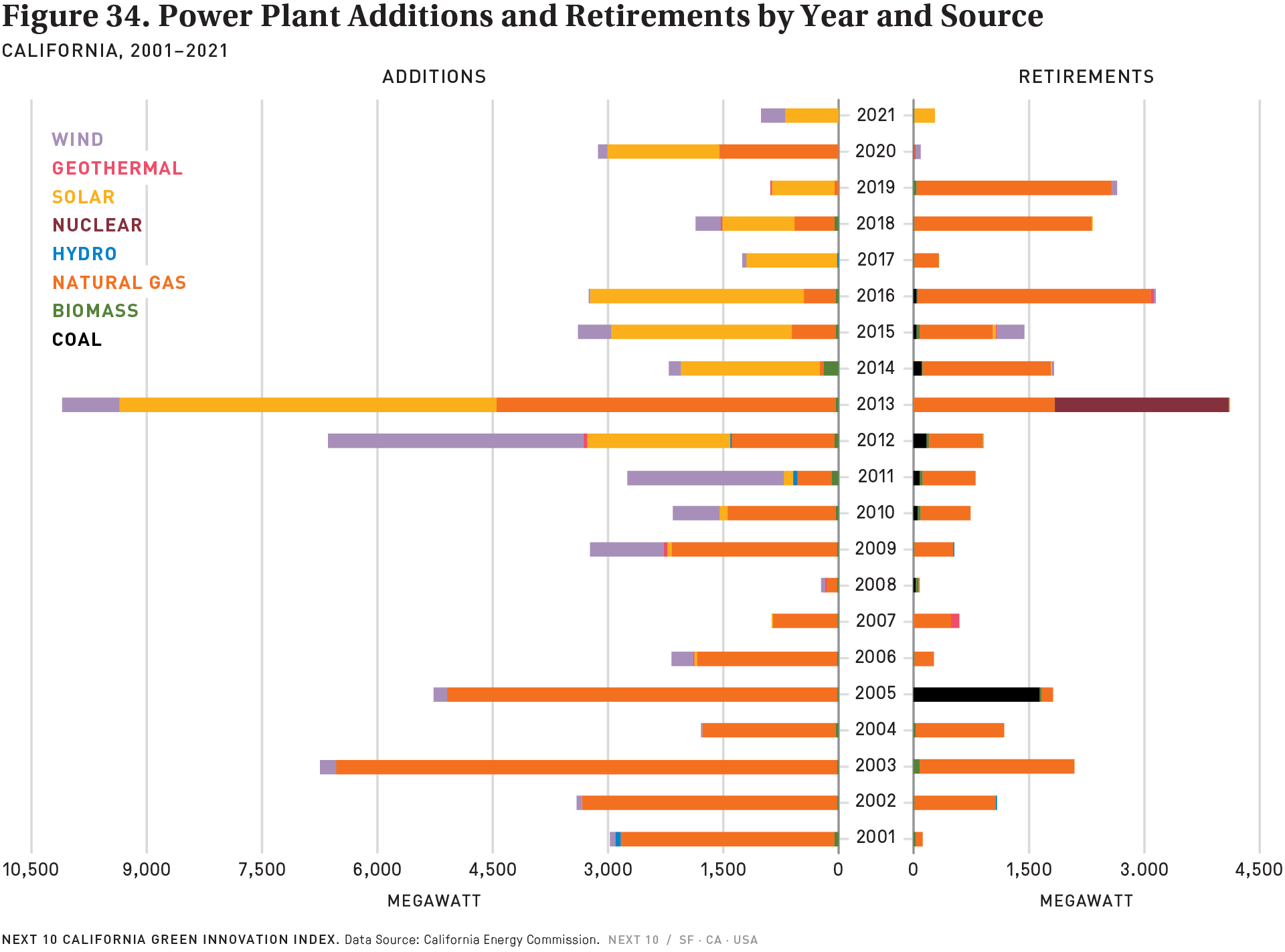Highlight
- 2021 marked the first year when power plant additions and retirements reached 100 percent non-hydro RPS-eligible renewables—meaning no fossil fuel plants were added or retired. Two biomass plants retired in 2020—E0026 (Collins Pine) with 12 megwatt (MW) capacity and E0095 (MM Tajiguas Energy) with 3.05 MW capacity. Additions of power plants solely came from renewable sources—with 704.7 MW and 309.8 MW from solar and wind power plants, respectively, installed in 2021. When generation exceeds demand, grid operators often curtail electricity production. In 2021, 264.4 MW of solar plants retired from the grid according to the California Energy Commission (CEC)—a record high compared to consecutive zero retirements reported from 2016 to 2020 (except 7.5 MW in 2018). This is due to the currently insufficient battery capacity which prevents California from capturing all of the wind and solar that the state is producing—thus, the output was deliberately reduced in order to balance the grid.134 However, the California Independent System Operator (CAISO) added 3 GW of battery storage in 2021, which allows greater opportunity for renewable energy production.
134 Bloomberg. “California’s All-Renewable Moment Shows the Future of the Power Grid.” May 5, 2022. Retrieved from: https://www.bloomberg.com/news/articles/2022-05-05/california-s-all-renewable-moment-shows-the-future-of-the-power-grid?leadSource=uverify%20wall
Challenge
- Despite the welcome news of the absence of natural gas in power plant additions in 2021—for the first time since 2001—solar additions decreased by 52 percent from the previous year as a result of supply chain challenges. Approximately one-third of solar capacity scheduled to come online in the fourth quarter of 2021 was delayed by at least one quarter. These constraints are expected to continue in 2022. As noted by the U.S. Energy Information Administration, supply chain constraints, labor shortages, and inflation, utility-scale solar capacity experienced a 20 percent delay nationwide in the first six months of 2022. Less than half of the planned 17.8 gigawatts (GW) of utility-scale solar capacity has come online.
135 Utility Dive. Utility-scale solar capacity delays hit 20% in first 6 months of 2022: EIA. August 16, 2022. Retrieved from: https://www.utilitydive.com/news/solar-delays-EIA-tariffs/629746/
More About
Renewable Energy
Related Content

